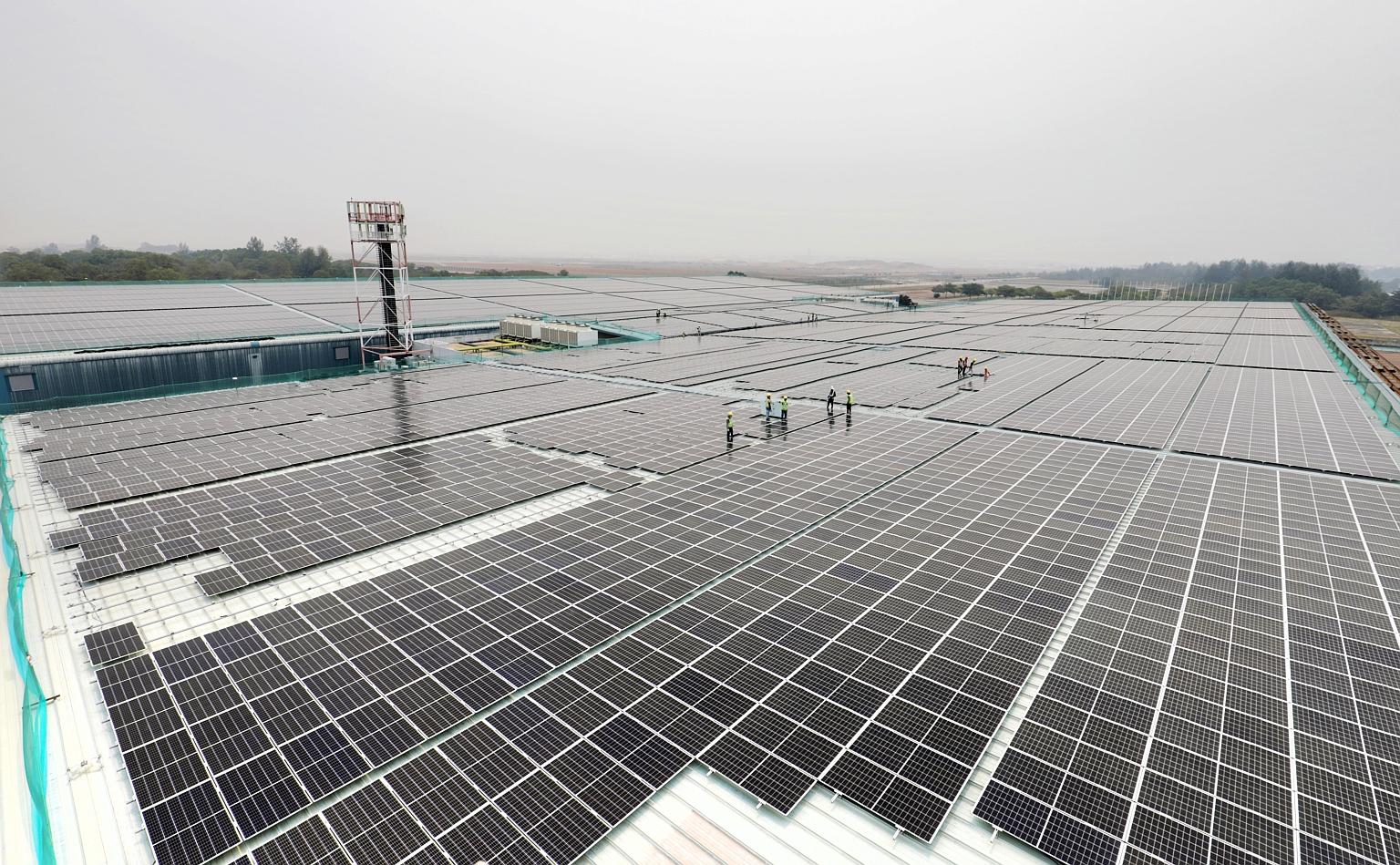Debate on ministries' budgets: Prime Minister's Office
Singapore's 2050 target: Halve emissions from 2030 peak
Aim is to achieve net-zero emissions as soon as viable in 2nd half of the century: SM Teo
Sign up now: Get ST's newsletters delivered to your inbox

Solar panels at Changi Exhibition Centre. Senior Minister Teo Chee Hean said Singapore will look at transforming its industry, economy and society, for instance, by ramping up its programme to capture more energy from the sun.
PHOTO: LIANHE ZAOBAO
Follow topic:
By 2050, Singapore wants to halve the amount of emissions it produces from its 2030 peak, with the aim of achieving net-zero emissions "as soon as viable in the second half of the century", Senior Minister Teo Chee Hean said yesterday.
This aim of emitting just 33 million tonnes of carbon dioxide equivalent emissions by 2050 will be challenging for Singapore, which has limited access to renewable energy options, he said.
Still, it was important for the country, which contributes 0.11 per cent to global emissions, to take action.
"Our impact on global emissions is small, but on the other hand, the effect of climate change on us is disproportionately large and existential," said Mr Teo, who chairs the Inter-Ministerial Committee on Climate Change, pointing to the impacts of sea level rise on low-lying Singapore.
In laying out Singapore's plans to tackle climate change during the debate on the budget of the Prime Minister's Office, which the National Climate Change Secretariat is part of, Mr Teo said there are three thrusts to Singapore's climate strategy.
First, it will look at transforming its industry, economy and society. For instance, Singapore will be ramping up its programme to capture more energy from the sun, and there are also plans to phase out internal combustion engine vehicles by 2040.
Second, Singapore will invest in research into emerging low-carbon and carbon capture utilisation and storage technologies.
Third, Singapore will work with the international community in establishing carbon markets and regional power grids.
The establishment of well-regulated carbon markets will give Singapore the option to purchase carbon credits to offset its emissions, while regional power grids will allow the nation to tap renewable energy sources not available to it currently, such as wind or geothermal energy.
"Each thrust will contribute to halving our emissions. We will pursue all three vigorously to achieve our aspiration," said Mr Teo.
As technology evolves, and as the modalities for international collaboration become formalised, Singapore will have a better idea of the extent to which potential emission reductions from each thrust can be achieved, he said.
"If the actual reductions from each thrust are larger than we now assess, or are available sooner, then we can realise our aspiration earlier," said Mr Teo.
But if potential reductions turn out to be less promising, Singapore will still strive to meet its long-term low-emissions development strategy aspiration to the best of its ability, he added.
In the nearer term, Singapore wants its emissions to peak at 65 million tonnes by 2030. This means that even if the economy continues to grow, the amount of emissions produced should not.
This absolute target - which Singapore will submit to the United Nations later this year as an update to its 2015 pledge under the Paris Agreement - will also include a new greenhouse gas, nitrogen trifluoride (NF3), on top of six other greenhouse gases included under its first pledge.
Mr Teo noted that all countries are required to report on NF3, which is produced in the manufacture of semiconductors, by 2024.
"Singapore will go beyond reporting NF3, and commit to including NF3 in our pledge, within this same emissions ceiling," he said.
When Singapore submitted its first pledge under the Paris climate pact in 2015, its main goal was to reduce its emissions intensity by 36 per cent from 2005 levels, and to peak by around 2030.
Now, Singapore is committing to the absolute peak emission level of 65 million tonnes of carbon dioxide equivalent around 2030, said Mr Teo.
The aim of the climate pledges, or nationally determined contributions, made under the Paris Agreement is to limit global warming to well below 2 deg C above pre-industrial levels, with the aim of limiting warming to just 1.5 deg C - the target scientists say is necessary for preventing the worst climate impacts.
However, the first round of pledges did not set the world on this path.
Scientists say that even if all current climate pledges are adhered to, the world would still warm by around 3 deg C.
This is why the Paris Agreement has a provision for countries to ratchet up their pledges every five years, based on the latest in technology and science.
Ms Melissa Low, a research fellow at the National University of Singapore's Energy Studies Institute and a long-time observer of international climate negotiations, said Singapore's updated pledge represents progress.
"It moves away from a relative target of emissions intensity, which will send a clearer signal to the international community, businesses and people here that we are committed to tackling climate change, but also that everyone needs to do their part to transform Singapore into a low-carbon society."

